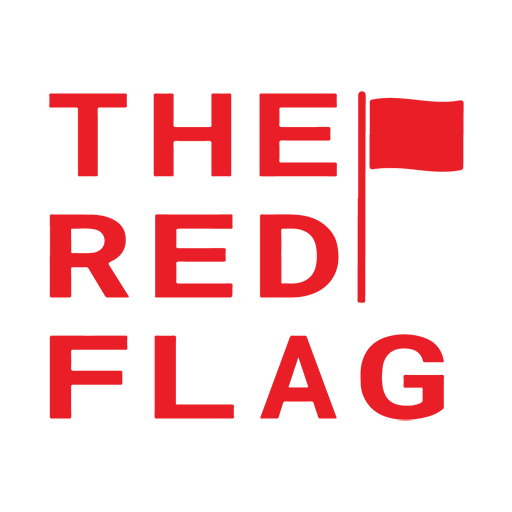White Flag Year of The Military Junta
2024 Annual Report for The Propaganda of Myanmar Military Propagandists
The Red Flag December, 2024
ŌĆ£It is not a lie when you are ordered to lie.ŌĆØ
Rihab Taha,
Iraqi Specialist in Biological Warfare
Introduction
The Red Flag team compiled and published nine case studies in 2024, addressing matters of special concern and emergency procedures. Two reports, covering the initial and subsequent four weeks of the year, have already been disseminated.
The military council (SAC), known for its illegal coup and widespread human rights violations, systematically employed propaganda on social media platforms supported by its loyalists. These efforts were aimed at concealing its actions, psychologically manipulating civilians, and attacking revolutionary forces. In response, the Red Flag team has monitored these activities to compile the 2024 Annual Report, which highlights the potential consequences of false news and disinformation.
The report covers themes such as the methodology, an analysis of the proliferation of false news and disinformation in 2024, assessments of harmful content, a study on information operations, numerical data, and a denotation of relevant keywords. It provides a comprehensive overview of strategies to counter and manage the spread of misinformation/disinformation on social media, alongside mandatory measures requiring attention in 2025.
Summary of the report
The military regime intensified its efforts as its losses escalated, with its propagandists attempting to salvage the junta from failure or reverse the unfavorable outcomes. Their tactics included targeting innocent civilians as hostages, described metaphorically as “burning a house to smoke out a rat.” which is to describe a situation when someone cannot overpower someone else, they try to suppress whatever related to that individual. 2024 was a year in which the regime and its supporters engaged in relentless activities, seeking innovative methods to spread false information and attract audiences through emerging platforms like TikTok, shifting from a traditional and boring news presentation.
The Second Wave Operation 1027: The military regime systematically lost control over most of Rakhine State, surrendering territory gradually. In response, they intensified online hate speech and conducted relentless propaganda campaigns. This includes targeting the Rakhine population while simultaneously inciting animosity against the Rohingya community. Additionally, they enforced the Military Conscription Law and used it to justify forcibly sending captured individuals to warzones, framing this action as legal. Ethnic armed groups in northern Shan State were labeled as terrorists, and the Chinese population also became targets of the regime’s hostility.
Silent strike: In an effort to deter civilian resistance, the junta sought to suppress a silent strike organized to honor the birthday of Daw Aung San Suu Kyi. Just as the junta incited such actions, they actively abetted the arrest to those participating in the strike. Evidence suggests that the junta initiated a campaign to frame citizens, including Myanmar nationals residing in Thailand, as terrorist supporters. Burmese immigrants in Thailand, many of whom fled due to various reasons, faced increasing suppression and challenges. Simultaneously, the SAC imposed excessive taxation on these immigrants, worsening their difficulties.
Another significant concern was the emergence of a militia group targeting and killing the civilians. Soon after the Black Death Squad (in Burmese: Anat Yaung Tay Min Ta Man Squad) surfaced, there were up to six murder cases reported, seemingly appearing to be orchestrated to portray as if the civilians had killed each other. It was the exact timing that the Kyaw Swar Telegram channel incited violence against the ordinary supporters of the NLD. Additionally, the Bamar National Defense group emerged, posing a direct threat to local people in northern Shan State. There had been cases of them promoting religious and ethnic divisions by alleging discrimination and oppression against Bamar individuals by ethnic groups.
Chapter 2 examines the various propaganda mechanisms employed by the military regime. False news and misinformation were disseminated in Burmese, Chinese, and Bengali, particularly in the contexts of northern Shan State and Rakhine issues. These efforts were not confined to online spaces but extended to frontline operations. For instance, coats and jackets supplied to frontline soldiers were printed with falsified information sourced from Telegram channels for propaganda. Furthermore, the junta’s lobbies established separate channels that are targeted to the new recruits by portraying military service as fair and conscripts as content with their roles. Cooperation among these lobbies intensified in 2024, with coordinated propaganda campaigns promoting their narratives. In some cases, these groups feigned internal conflicts to garner attention and manipulate public perception.
Another strategy involved diverting attention from revolutionary movements. The regime framed these movements as losing significance while simultaneously making it seems that the trivial and attention-seeking content (Pwal Shar) are more appealing to the audiences on the social media platforms. A widely used platform like Tik Tok served as a key tool for this strategy. The regime used such platforms to host quizzes and lucky draws tied to accusations against anti-junta forces.
A notable case in 2024 was when the criticisms directed at the Senior General Min Aung Hlaing were coming from pro-military people. Figures such as Pouk Kodaw, Naung Taw Lay, Kyaw Soe Oo, and Kyaw Myo Min were arrested briefly after expressing their opinions and then released. Meanwhile, Ngar Min Swe remained in detention.
In summary, 2024 was a year marked by significant challenges for the SAC and its affiliatedp propagandists. Despite adopting new propaganda strategies, their efforts largely failed to achieve their objectives. The loss of control over regional military hubs underscored the regimeŌĆÖs declining influence. The propagandists, tasked with disseminating false narratives, experienced a humiliating year as their fabrications increasingly exposed their failures. Ultimately, 2024 can be characterized as a ŌĆ£white flag yearŌĆØ for the military and its propagandists, signifying their acknowledgment of defeat amidst their relentless propaganda efforts.
Report methodology
The Red Flag conducted an analysis of 3,104 published pieces of content collected from 317 social media pages monitored from January 1 to December 10, 2024. Telegram was identified as the primary platform for observation, followed by TikTok, YouTube, and Facebook.
The analysis utilized a combination of qualitative and quantitative methodologies to ensure a comprehensive understanding of the data.
The content kept through the qualitative method was examined with a focus on the following factors:
- False news and misinformation/disinformation
- Harmful content
- Content distribution strategies
- Decoding banned/censored words┬Ā
Through the quantitative approach, it includes:
- Risk Level
- Category
- Issue
- Target (individuals or organizations)
The data were further analyzed using metrics such as color-coded representations, numerical calculations, and percentages to determine the most frequently used standards and trends.


